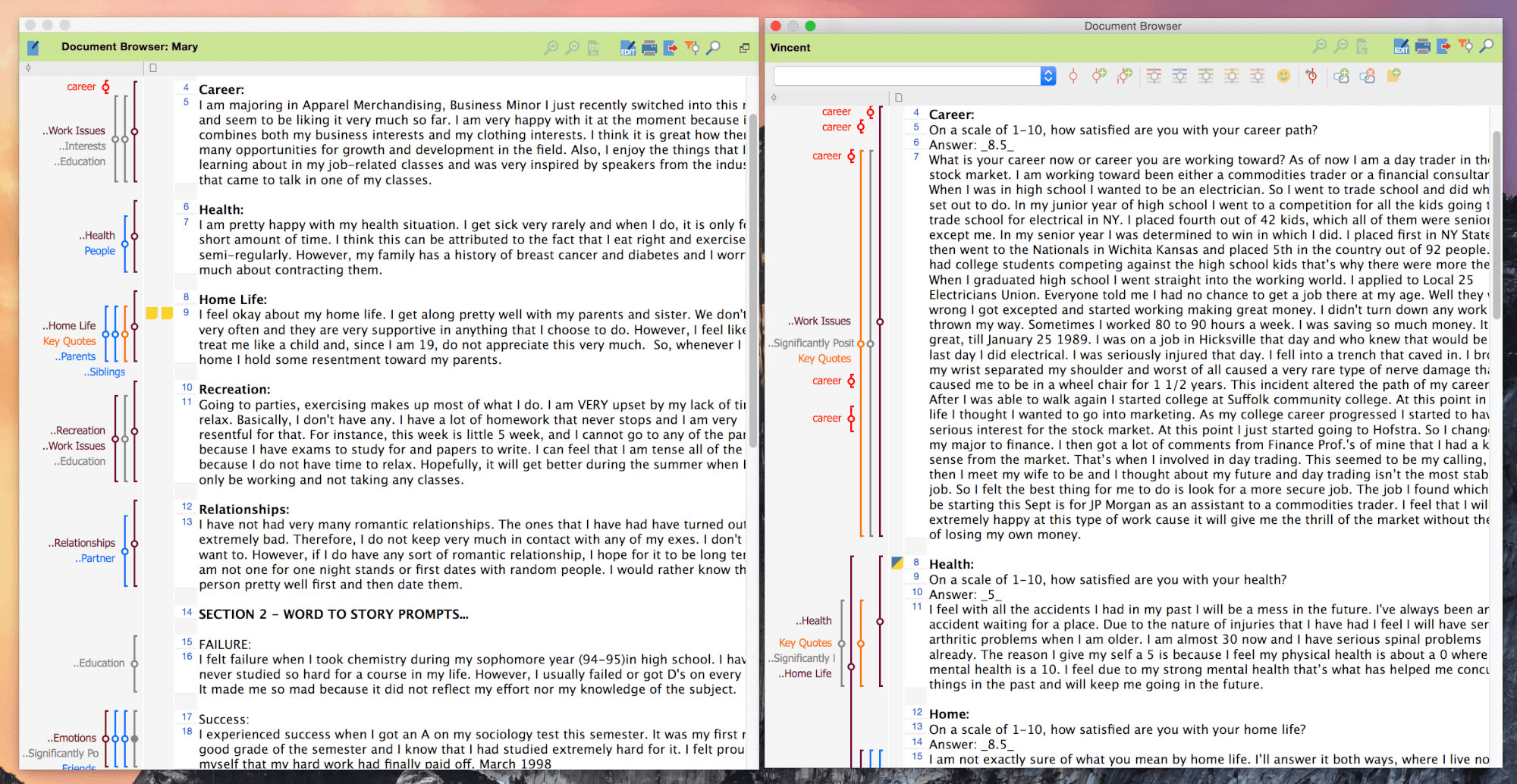
TIP: There is no need to highlight any text as an anchor for the memo. After getting the main idea down you can edit the fields at the top of the memo dialog to add a short title and maybe alter the post-it note symbol to one of the 10 coloured designs.įigure 6.1.4 – Adding a memo inside a document The standard memo dialog box appears immediately and you can start typing straight away to capture that fleeting insight before something else distracts you. All that is needed is a double-click in the margin immediately to the left of the text where you want the note to be connected. When an idea comes into your head, you want to make a note of it as simply as possible. The procedure for adding a memo inside a document is quick and intuitive. Inserting memos in a document in the Document Browser Where you want to add a note or annotation about a particular passage of text within a document, then that should be done with a memo that is attached to that paragraph. The comments that you add to a document memo should ideally be those that relate to the document as a whole. This is illustrated in Figure 6.1.3 below.įigure 6.1.3 – Revealing the start of a memo When you hold the cursor on top of this symbol a temporary panel appears showing the first few lines of text in the memo, this can be a useful quick reminder and so you should try to keep the most important ideas at the top of the memo (if possible) where they will show up in this way. TIP: As soon as the memo is created a “post-it note” icon will appear alongside that document’s label in the Document System window. Figure 6.1.2 shows an illustration of this.įigure 6.1.2 – Adding text to a document memo The text of the memo is typed into the main field of the dialog, just like in any other type of memo. There is also a short-cut keystroke for this operation (Ctrl+M) as can be seen in Figure 6.1.1 above. Note that the document concerned does not have to be open in the Document Browser or activated when its memo is accessed. The precise location of the cursor is important in order to make sure that the memo is attached to the correct document but, as the context menu is opened, the blue highlight bar will jump to the document involved providing a visual indication of that. The first time this is done for a document a new memo is opened, subsequently the same option re-opens the existing memo. The document memo can be opened with the right-click context menu option “Document memo” when the cursor is held over the document label in the Document System. one per chapter).A single memo can be created for each document in the Document System, and this memo can be added to as often as you like with a toolbar button to insert the current date and time as an aid to separating developing ideas within the memo.
MAXQDA PDF PDF
You can flip forward and backward, adjust the zoom and use the bookmarks for navigation (many PDF files have several bookmarks, e.g. Navigating through the “Document Browser”Īs soon as a PDF document is displayed in the Document Browser, several clickable icons will appear in the toolbar.
MAXQDA PDF CODE
These functions include, among others, automatic coding with the parameters “Sentence” or “Paragraph”, as well as the “Near” function for segments in the Complex Coding Query and Code Matrix Browser. MAXQDA functions that rely on the paragraph structure can therefore not be used in PDF documents. PDF documents, unlike text documents, have no paragraph structure per se.

This process makes it possible to mark and code the text in MAXQDA later, otherwise it would only be possible to mark images. If a text is in the format of a scanned PDF file, Optical Character Recognition or OCR, a text recognition process, must carried out with a suitable program before the import into MAXQDA. The “Near” function for image segments always returns a result of 0, both in the Complex Coding Query and the Code Relations Browser. Overlap between text segments and image segments will be ignored. MAXQDA does not distinguish between text and image encodings in regard to code frequency however in the Coding Query when searching for overlap, the query will search independently for overlap/intersection in text and image documents. Select and create a frame around the desired segments to subsequently code them. Text and image segments in PDF documents can be coded with the mouse.

For optimal performance it is recommended that externally saved files be located on the local hard disk and if possible not on a network, although the acceleration of network speeds mean that this poses less and less of a problem. with a total size of more than 1 GB), it makes sense to store them externally so that the MAXQDA file remains small and can be easily secured. Tip: If you are working with many large PDF files (e.g.


 0 kommentar(er)
0 kommentar(er)
